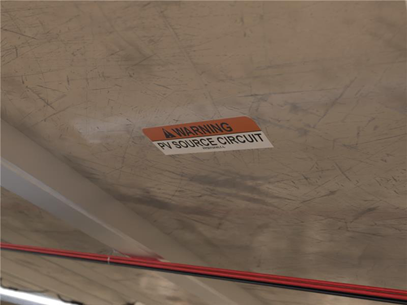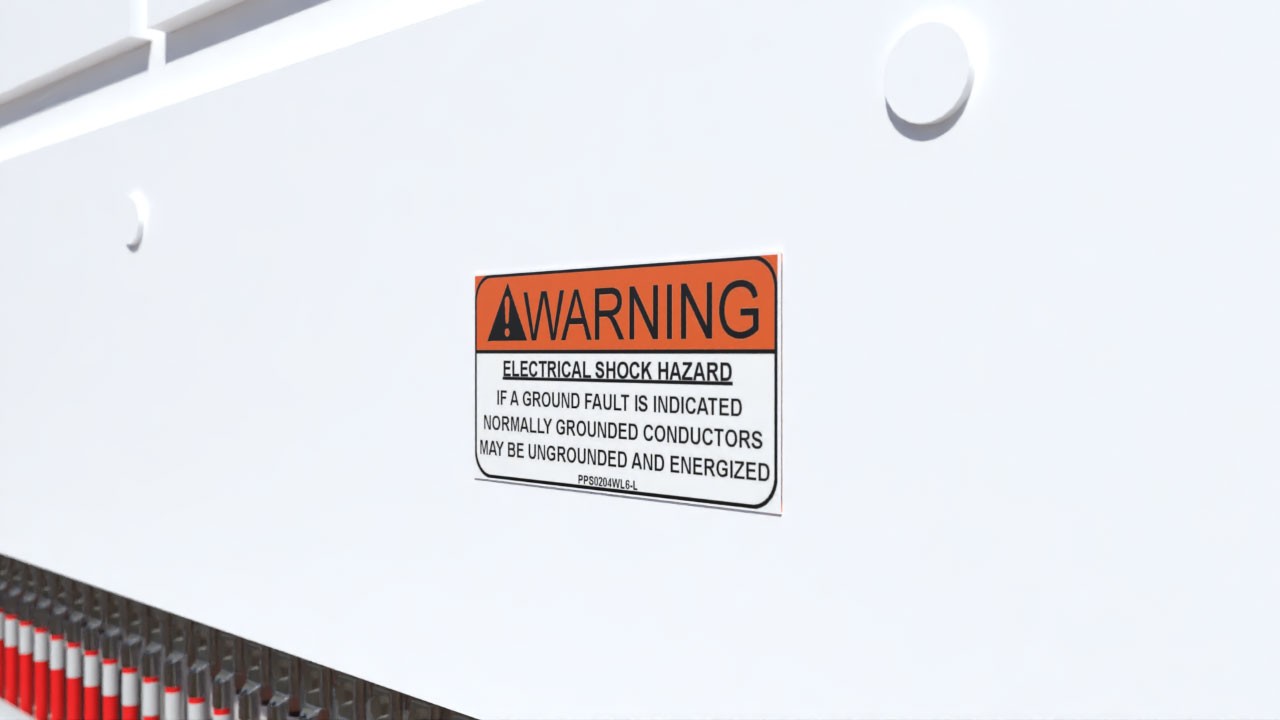Build Solar Better: Solar Label Solutions that Boost ROI
Solar power plants require a lot of labels. The underlying reason is that they are massive, harnessing thousands – or millions – of PV modules to generate utility-scale power. In the U.S., a 50 Megawatt (MW) solar plant requires roughly 70,000 NEC safety labels. And this number doesn’t include wire identification for the miles of conductors used to carry power along the DC distribution system. Together, these labels make up an important part of the Solar Balance of System (BOS).

Labels are found at every point of the DC distribution system, starting at the source.
The outdoor, distributed nature of solar power means that workers are in unusually close proximity to dangerously high current. During construction each module and every stage of the system are connected by hand to manage the energy flow from generation to the transmission line. Once built, crews work in and around the entire operation to control vegetation, keep modules clean, and make repairs to maintain peak production. Labels help create a safe environment for the people building and maintaining the plant over the 25+ year operating life.
Harsh Environments
Solar farms are uniquely challenging environments where components are subject to intense UV radiation, moisture, wind, and other outdoor elements. Each of these factors can fade or destroy labels on their own, so premium materials and adhesives are required for long-term reliability. But because of the sheer number required, label solutions must also be cost-conscious and easy to apply. To walk this fine line with confidence requires laboratory evaluation.
Fading is the number one concern for solar labels. “Labels can look great the day a plant is commissioned, but be unreadable within a few years,” explains Chris McConnell, Senior Product Manager at Panduit. “To bring the operation up to code, they would need to be replaced. Over 25 years these costs can really add up, and in the meantime worker safety is compromised. We’re pushing to develop solutions that last 10 years or more, to minimize long-term maintenance costs.”
Made to Last
Panduit pre-printed solar labels are made with rugged polyester material, and when combined with thermal transfer printing and lamination at the Panduit manufacturing facility, they resist fading in harsh outdoor environments very well. Internal UV chamber testing has shown our labels to maintain legibility in excess of 7.5 years – and it’s still going. Other suppliers may choose to print on less expensive, lower grade materials, but they typically fade within a few years.
In the lab, labels are also subjected to environmental, chemical, and abrasion testing to simulate long-term effects of real-world exposure. Through this process we’ve verified an extra-strength adhesive that helps solar labels adhere to rough or uneven surfaces, even in the presence of rain. We don’t limit testing to internal R&D, our labels have also earned UL compliance.

Labels in the Panduit lab after equivalent of 7.5 years UV exposure.
Solar Identification Needs
There are two primary types of labels as part of the Solar BOS: safety/hazard communication and wire identification. Safety labels are used on components throughout the system, including PV modules, combiner boxes, disconnects, inverters, and battery energy storage systems (BESS). These can be purchased in pre-printed packs for peel and stick convenience or printed on demand in-house for each project. Print on demand has a higher upfront equipment cost but saves money long-term and offers just-in-time flexibility. When the proper blank label is used, print on demand labels perform as well in the field as factory printed options.

Clearly marking incoming string wires at the combiner box streamlines future maintenance.
To streamline initial connections and simplify future maintenance we recommend clearly identifying wires and cables. Some contractors hand mark wires using white electrical tape and an ink pen. Though straightforward, it’s not best practice because the results are inconsistently legible due to handwriting or fading. Better to use heat shrink or self-laminating labels, which can be made in house with the same desktop printing equipment as safety labels, or in the field with mobile printers.
Opportunity for Process Optimization
Labeling needs are not typically top of mind when planning a new solar power plant, but the sheer number required presents an opportunity for process optimization. For any project, investing in high quality options pays off with a safer work environment and lower replacement costs throughout the operational life. If you’re building multiple sites, in-house desktop printing is best to ensure you always have just what you need to keep a project on track, while reducing costs. And equipping field crews with corresponding mobile units creates consistency, flexibility, and legibility when marking wires.
Panduit offers a comprehensive line of Solar BOS product solutions in addition to labels, including wire management, power connectors, and grounding. Many of our wire management products are covered by the best-in-class Build Solar Better 20-Year Warranty. If you would like to discuss your BOS needs it’s easy to connect with our Renewable Energy experts, or you can explore our solar solutions webpage for more information.


